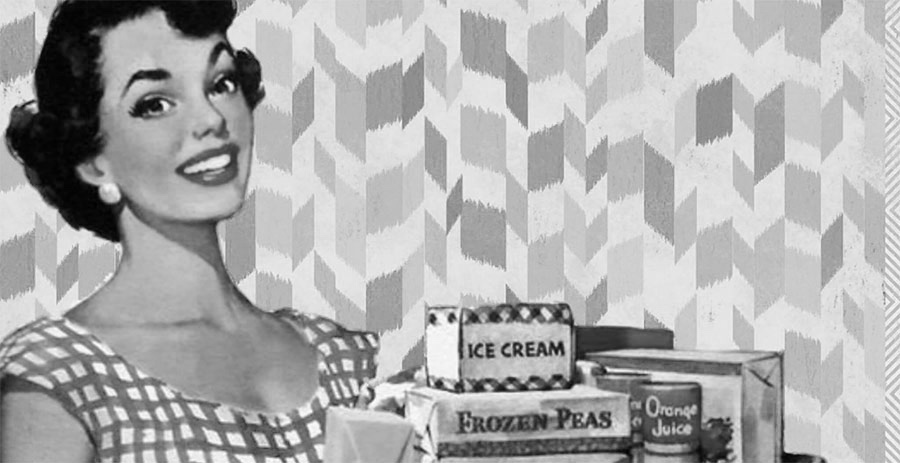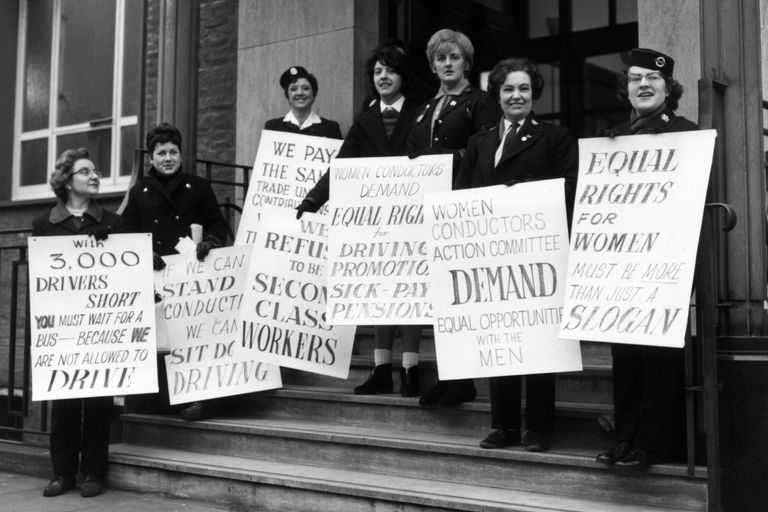

1972, The Gazette
In 1972, two teachers accused the school district of firing them based on the sole premise that they were pregnant. They took their case to court and ended up losing by the ruling Judge William Eads made.
In the political cartoon it shows how Judge William Eads threw out the maternity leave issue and the weight his ruling had. The Gazette portrayed Judge William Eads as a baby to demonstrate the ignorance he had in dealing with this issue.
During the 1950s psychologists, doctors, and women’s magazines implied that all a woman needed in life to be fulfilled was “a loving husband, healthy children, and a house in the suburbs” (The Americans, 982). Betty Friedman had all this but was not happy. She later wrote a book, The Feminine Mystique, to address the “problem that has no name.”
To describe this feeling to her readers she wrote, “The problem lay buried, unspoken…. It was a strange stirring, a sense of dissatisfaction, a yearning that women suffered in the middle of the twentieth century in the United States. Each suburban wife struggled with it alone. As she made the beds, shopped for groceries, matched slipcover material, ate peanut butter sandwiches with her children, chauffeured Cub Scouts and Brownies, lay beside her husband at night -- she was afraid to ask even herself the silent question -- ‘Is this all?’” (The Feminine Mystique).
Through her work in social justice and women’s rights Ruth Bader Ginsburg adressed this problem of women’s inequality, stereotypes, and workplace discrimination giving this problem a name.

Betty Friedan, Global Merrit & Essence Awards Network Inc.

Betty Friedan group of women demonstartors, 1971, League of Women Voters of the US

Bus conductors in London Demand Equal Opportunity, 1968, ThoughtCo.
In the 1960s, certain jobs were still considered “men’s work”. Available to women were mostly clerical work, domestic service, retail sales, social work, teaching, and nursing, all of which paid poorly. As facts about women’s unequal status were becoming more publicized it awakened many women to the surreal realization of their social standing.
Ruth Bader Ginsburg was one of nine women accepted into Harvard Law School, class of 1956, before transferring to Columbia Law School to keep her family together once her husband accepted a job at a New York law firm. Even though Ginsburg tied for the first of her class she struggled to find a firm that would hire her. One of the professors at Harvard Law School even recommended her for a clerkship with Supreme Court Justice Felix Frankfurter. His response was that he wasn’t ready to hire a woman and requested Sachs to recommend a man. Her job search continued, leading her to interview at twelve law firms, none of which offered her a position. Without this first hand experience of gender discrimination, Ginsburg believes she might have never walked the path she paved.
Ruth Bader Ginsburg, Biography

1988, Library of Congress
In 1988, women were still facing wage gap discrimination and while Ruth Bader Ginsburg’s work allowed for recognition of gender-based discrimination there was still much work to be done for gender equality. The political cartoon shows the climate after Ruth Bader Ginsburg’s case and also the shift of feminism in the workplace.